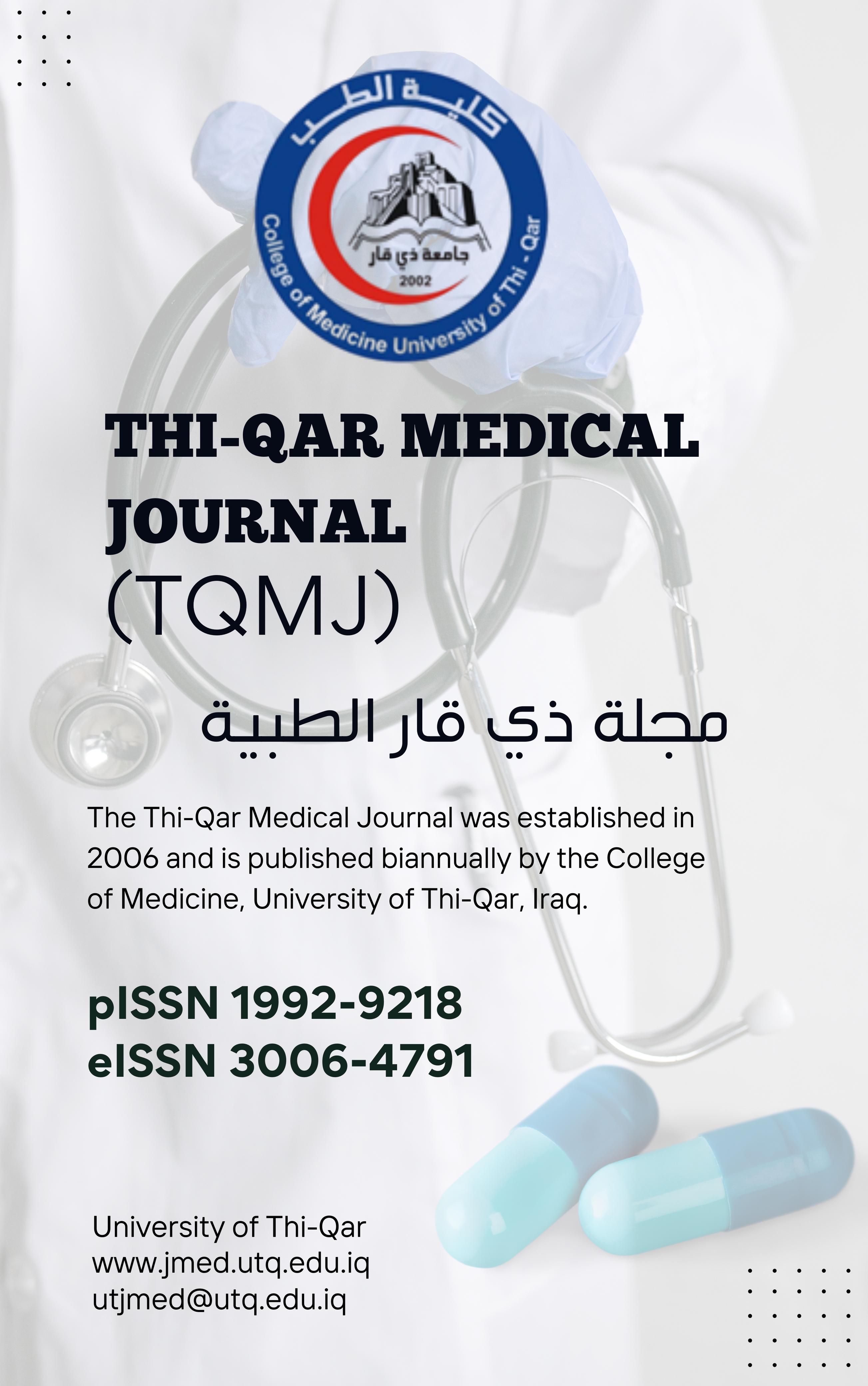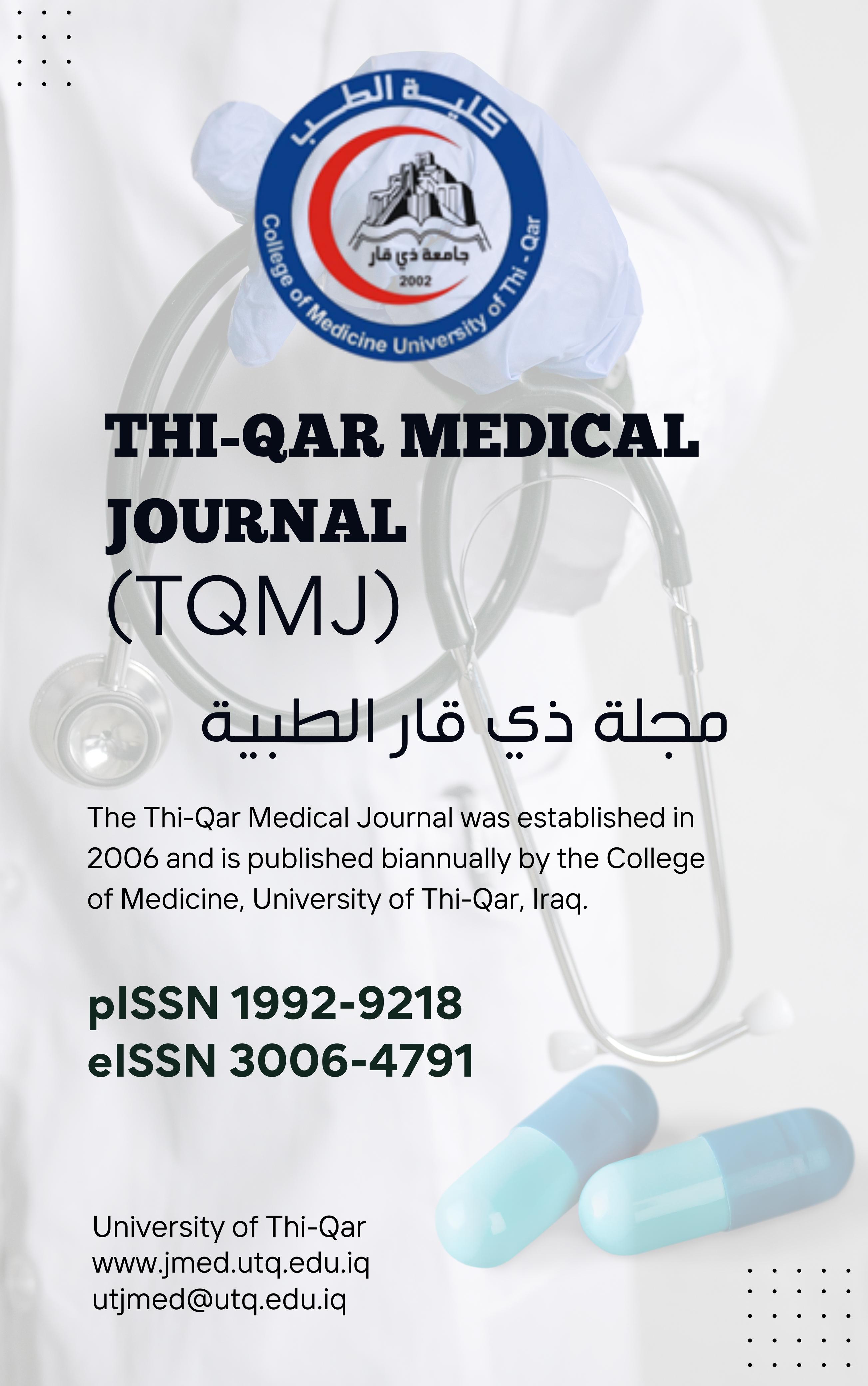Childhood Obesity: Causes, Complications and Preventive Strategies
DOI:
https://doi.org/10.32792/jmed.2025.29.14Keywords:
Obesity, overweight, children, Complications, PreventionsAbstract
Obesity has become more prevalent in the recent decades and is expected tobecome one of the most significant public health challenges of the 21st century,
especially in low- and middle-income countries. According to UNICEF and
WHO estimates, in 2000, about 30 million children under the age of 5 were
overweight or obese, and this number rising significantly to 37 million children
in 2022. Obesity rates among children and adolescents aged 5-19 years also
increased 10-fold between 1975 and 2022. In 2022, 159 million (65 million girls
and 94 million boys) were obese, compared to 11 million (5 million girls and 6
million boys) in 1975. In Iraq, the number of children and adolescents aged 5-19
years who are overweight reached 5 564 610 in 2020, and the number is
expected to rise to about 9 472 248 in 2035, which puts them at constant risk of
complications of obesity, which is expected to reduce the average lifespan of
children by half in the future.
Objectives of this study:
1.Definition of overweight and obesity in children and knowledge of the causes
and risk factors leading to obesity and its consequences on children’s physical
and psychological health and its negative effects on family and community.
2.Providing recommendations and proposals that include health and nutritional
awareness programs for children, parents, health center workers, educational
process managers in the schools and kindergartens, and local governments to
combat obesity and detect it in its early stages and develop treatment plans to
control excess weight.
References
Obesity and overweight - World Health Organization. https://www.who.int/news-room/fact-sheets/detail/obesity-and
overweight.
NCD Risk Factor Collaboration (NCD-RisC). Worldwide trends in body-mass index, underweight, overweight, and obesity
from 1975 to 2016: a pooled analysis of 2416 population-based measurement studies in 128·9 million children,
adolescents, and adults. Lancet. 2017;390(10113):2627‐2642. DOI: 10.1016/S0140-6736(17)32129-3
Phelps NH, Singleton RK, Zhou B, et al. Worldwide trends in underweight and obesity from 1990 to 2022: a pooled
analysis of 3663 population-representative studies with 222 million children, adolescents, and adults. The Lancet. 2024;
(10431): 1027 – 1050. DOI: 10.1016/S0140-6736(23)02750-2
World Obesity Atlas 2024. World Obesity Federation https://data.worldobesity.org/publications/?cat=22.
Gahagan Sh. Overweight and Obesity. In: Kliegman RM, St Geme JW, Blum NJ, Shah SS, Tasker RC, Wilson KM, eds.
Nelson Textbook of Pediatrics, 22 ed. Elsevier. Co;2024;438 -450.
The WHO Child Growth Standards. https://www.who.int/tools/child-growth-standards/standards.
Jebeile H, Kelly AS, O'Malley G, Baur LA. Obesity in children and adolescents: epidemiology, causes, assessment, and
management. Lancet Diabetes Endocrinol. 2022 May;10(5):351-365. DOI: 10.1016/S2213-8587(22)00047-X
Childhood obesity - Symptoms and causes. https://www.mayoclinic.org/diseases-conditions/childhood-obesity/symptoms
causes/syc-20354827.
Abood GM, Kadhem RH, Mohan JB. Prevalence and determinants of overweight and obesity among public primary school
students in AL-Nasiriya city at 2018-2019. Curr Pediatr Res. 2021; 25 (8): 805-812.
Balasundaram P, Krishna S. Obesity Effects on Child Health. 2023 Apr 10. In: StatPearls [Internet]. Treasure Island (FL):
StatPearls Publishing; 2024 Jan. PMID: 34033375.
Al-Asadi GM. Extent of overweight and obesity among children aged (6-60) months in Al-Nasiriya at 2015-2016. Thi-Qar
Med J 2018; 15(1): 58-71. DOI: https://doi.org/10.32792/utq/utjmed/15/1/5
Di Cicco M, Ghezzi M, Kantar A, Song WJ, Bush A, Peroni D, D'Auria E. Pediatric obesity and severe asthma: Targeting
pathways driving inflammation. Pharmacol Res. 2023 Feb; 188:106658. DOI: 10.1016/j.phrs.2023.106658
Li ZA, Samara A, Ray MK, et al. Childhood obesity is linked to putative neuroinflammation in brain white matter,
hypothalamus, and striatum. Cereb Cortex Commun. 2023 May 2;4(2): tgad007. DOI: 10.1093/texcom/tgad007
Vol 29., No 1., 2025, pp 119-123
Pati S, Irfan W, Jameel A, Ahmed S, Shahid RK. Obesity and Cancer: A Current Overview of Epidemiology,
Pathogenesis, Outcomes, and Management. Cancers (Basel). 2023 Jan 12;15(2):485. DOI: 10.3390/cancers15020485
Kar SS, Dube R, Kar SS. Childhood obesity-an insight into preventive strategies. Avicenna J Med. 2014 Oct;4(4):88-93.
DOI: 10.4103/2231-0770.140653
Report of the Commission https://iris.who.int/handle/10665/255160. on Ending Childhood Obesity. World Health Organization.
Guideline: Assessing and Managing Children at Primary Health-Care Facilities to Prevent Overweight and Obesity in the
Context of the Double Burden of Malnutrition: Updates for the Integrated Management of Childhood Illness (IMCI).
Geneva: World Health Organization; 2017. Available from: https://www.ncbi.nlm.nih.gov/books/NBK487902/.
Vorland CJ, Bohan Brown MM, Cardel MI, Brown AW. Traffic Light Diets for Childhood Obesity: Disambiguation of
Terms and Critical Review of Application, Food Categorization, and Strength of Evidence. Curr Dev Nutr. 2022 Jan
;6(3): nzac006. DOI: 10.1093/cdn/nzac006
Downloads
Published
Issue
Section
License
Copyright (c) 2025 Ghada Mansoor Abood, Roua Hameed Kadhem, Ali Abdul-Baqi Ali

This work is licensed under a Creative Commons Attribution 4.0 International License.





